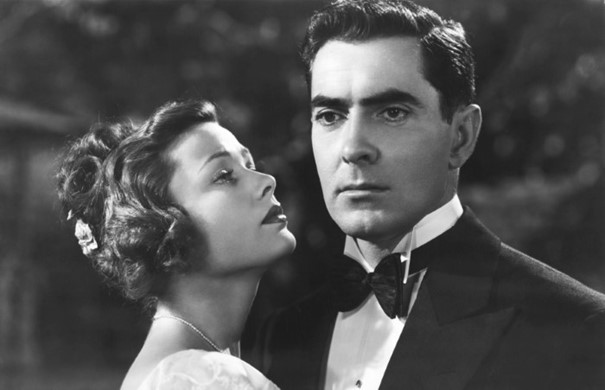When a film festival celebrates a technology, as does The Nitrate Picture Show, and it’s located at the George Eastman Museum, you should expect more than just movies. Last weekend’s event included two lectures by preservationists, workshops on making nitrate film, and tours of more than the nitrate vaults. I attended a Technology Collection tour, going through a warehouse of old cameras, projectors, and anything else related to photography.

But best of all, and running throughout the festival, was the Nitrate Touch. Here you could put your gloved fingers (you had to wear gloves) on a roll of old nitrate stock, and view it through a loupe. I saw a roll of vibrant, nitrate, Technicolor patched up with faded, Eastmancolor safety stock. I held a bit of camera negative of Leni Riefenstahl’s Olympia, with a notch on the side intended to control timing in the printing process.

Saturday was the longest day of the festival, with four feature films:
The Razor’s Edge

After Friday night’s screening of Holiday, a comedy about a man quitting the rat race to find himself, Saturday started with the Razor’s Edge, a drama about the same thing. I don’t know of it was intentional.
This 1946 version of W. Somerset Maugham’s novel, directed by Edmund Goulding, is a very well-made film. Arthur Miller (the cinematographer, not the playwright) did wonders with the camera. Both Tyrone Power and Anne Baxter give exceptional performances. But Lamar Trotti’s screenplay turns the story (which I haven’t read) into soap opera. At 145 minutes, it’s long for a movie of that period, and you can feel the length.
I give it a C+.
The print had minor scratches, but otherwise was just mouthwatering.
Mlhy Na Blatech (Mist on the Moors)

A Czech film from 1943 inevitably carries historical weight. František Čáp made the film under Nazi occupation. You can’t help wondering to what degree it’s a work of collaboration, or a work of resistance.
But what we have is the movie – a story set in the rural past, about a frequently-shirtless young man who tries to raise himself up but always gets beaten down. The authorities, who are Czech, not German, are fair and humane. There’s also a love story.
I find it difficult to judge this film, due to the very sparse, digitally-projected subtitles. I often didn’t know what the people onscreen were saying.
On the other hand, the print – from the Czech National Film Archive – was beautiful.
Winchester ’73

I’ve seen this 1950 Anthony Mann w before, but long ago and on Laserdisc. This was an entirely different experience.
James Stewart, in the role that helped him find his dark side, plays a man bent on revenge. He wins an exceptionally good rifle in a marksman contest, but it’s soon stolen. The rifle changes hands several times, while Stewart and his sidekick (Millard Mitchell) search for the villain who committed that crime and a far worse one. Shelley Winters is wonderful as a woman far more courageous than her fiancé would ever be.
I give this western an A-.
The print was as excellent, but occasionally the focus went soft, probably from warping.
The Red Shoes

I’ve seen this 1948 Technicolor fable about sacrificing oneself for art four times now, and all of them in 35mm. The story is sometimes weak – especially in the second half – but often very strong. The 20-minute ballet sequence at the film’s center is a masterpiece of filmed dance and a great example of three-strip Technicolor at its best.
I wrote about The Red Shows in detail in 2010, but later screenings have increased my opinion of this Michael Powell/Emeric Pressburger extravaganza from a B+ to an A-.
And this time, the print was special. The intensity of the colors, thanks to Technicolor’s IB printing process, made the movie amazing.
